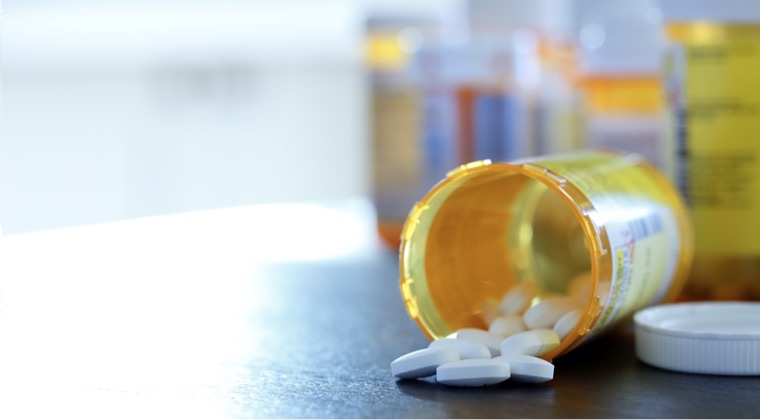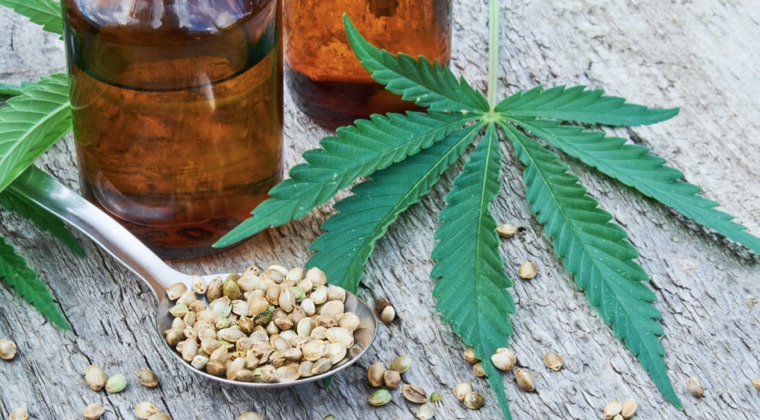There are many pain medications available with and without a prescription. Some of these medications work best for acute pain, while others can help with chronic pain. Each medication reduces pain in a slightly different way. For example, some medications act to prevent pain signals from reaching the brain, while others alter how the brain processes pain once the pain signals are there. This section reviews a few of the more common classes of pain medications.
Acetaminophen
Back to topAcetaminophen is a non-addictive drug that can be used to treat mild to moderate pain and fever. Acetaminophen is commonly used to treat headache, arthritis and back pain, tooth pain, the common cold, sore throat, sinus infection, bites, stings, and sprains. Acetaminophen is available over-the-counter in the U.S..
How does Acetaminophen work?
Acetaminophen inhibits the production of prostaglandins in the body which promote fever and appears to raise the threshold for pain making it harder for nociceptive information to be interpreted as pain by the brain.
What are the names of some Acetaminophen products?
- Acetaminophen (e.g., Tylenol, Paracetamol, Panadol)
- Acetaminophen + aspirin + caffeine (e.g., Excedrin)
Risks
Some of the short-term side effects of paracetamol include headache, rash, nausea. Acetaminophen does carry some risk of liver injury and kidney damage in the long term.
NSAIDS
Back to topNon-steroidal anti-inflammatory drugs (NSAIDs) are drugs with little to no risk of addiction, that can help to reduce pain, inflammation, and fever. NSAIDs are commonly used to manage arthritis (osteoarthritis, rheumatoid arthritis), lupus, ankylosing spondylitis, headaches, sports injuries, and menstrual cramps. NSAIDs are available over-the-counter in the U.S. or at higher strengths by prescription.
How do NSAIDs work?
The body produces enzymes called cyclooxygenases (COX) which in turn produce prostaglandins. There are two types of COX enzymes (COX-1 and COX-2). Both produce prostaglandins that promote inflammation and fever. While inflammation and fever are unpleasant, these symptoms are also important for healing. In addition, COX-1 produces prostaglandins that also play a role in blood clotting, and protecting the lining of the stomach from acid damage.
NSAIDs reduce pain by blocking the COX enzymes throughout the body leading to reductions in inflammation and fever. Unfortunately, blocked COX-1 enzymes can also result in thinner blood (e.g., reduced ability to clot), and unprotected stomach linings (e.g., ulcers and stomach bleeding).
While traditional NSAIDs blocked both COX-1 and COX-2 enzymes, newer NSAIDs called "COX-2 inhibitors" only block the COX-2 enzyme so that inflammation and fever can be reduced without effecting blood clotting and the stomach lining.
What are the names of some NSAIDs?
Traditional NSAIDs
- Aspirin
- Ibuprofen (e.g., Motrin, Advil)
- Naproxen (e.g., Naprosyn, Aleve, Anaprox, Naprelan)
- Oxaprozin (e.g., Daypro)
- Diclofenac (e.g., Cambia, Cataflam, Voltaren-XR, Zipsor, Zorvolex)
- Piroxicam (e.g., Feldene) -
COX-2 Inhibitors
- Celecoxib (e.g., Celebrex)
Risks
Short-term side effects of NSAIDS include: nausea, stomach pain, bleeding and ulcers.
Some of the long-term risks of NSAID use include:
- increased risk of cardiovascular problems
- interactions with drugs used to treat heart disease such as blood thinners and antihypertensive drugs
- large doses confer risks of kidney problems
- fluid retention
- high blood pressure
In general, you may want to consult your healthcare provider if you want to use NSAIDs, especially if you are pregnant, have high blood pressure, asthma, or a history of kidney or liver disease. Side effects tend to be greater in older individuals.
Muscle relaxants
Back to topThe term "muscle relaxant" is used to describe a wide variety of drugs that have been used to treat muscle pain or spasms. Muscle relaxants are prescription drugs. Some of these drugs work to relax muscle by working directly on the muscle, whereas others work on the nerves supplying signals to the muscles.
Risks
Muscle relaxants can affect overall muscle tone and may be dangerous if muscle tone is needed for safe balance or movement. Taking these drugs with alcohol or opioids/narcotics can enhance these effects and this is particularly dangerous. Many muscle relaxants need to be tapered off slowly, rather than abruptly stopped. Other side effects include drowsiness, dry mouth, fast heart beat, upset stomach, headache, weakness.
Antidepressants
Back to topSeveral drugs that were originally shown to be effective in treating depression can also be used to treat chronic pain. Not all antidepressants work to treat pain, and when antidepressants do work to treat pain, it is not because they are treating depression. The antidepressants that are most useful in treating chronic pain are those that raise levels of two different brain chemicals or neurotransmitters – serotonin and norepinephrine. Serotonin and norepinephrine levels in certain brain regions help the body to inhibit pain. When levels of serotonin and norepinephrine are low in certain brain regions, the nervous system becomes more sensitive to pain.
What are the names of some Antidepressants that are used to treat chronic pain?
Selective Serotoinin Reuptake Inhibitors (SSRIs) - Fluoxetine (Prozac) - Paroxetine (Paxil) - Sertraline (Zoloft) - Citalopram (Celexa) - Es-citalopram (Lexapro) - Fluvoxamine (Luvox) - Volazodone (Viibrid) - Vortioxetine (Brintellix)
Selective Norepinephrine Reuptake Inhibitors (SNRIs) - Duloxetine (Cymbalta, Irenka) - Milnacipran (Savella) - Venlafaxine (Effexor, Effexor XR) - Atomoxetine (Strattera) - Desvenlafaxine (Pristiq, Khedezla) - Levomilnacipran (Fetzima) - Tramadol (Ultram, Ultracet)
Risks
Some of the more common side effects of antidepressants include:
- Nausea, constipation, diarrhea, stomach pain, upset stomach, throwing up, or feeling less hungry. These side effects are often worst when the person first starts taking the drug, and get better over a few days to weeks. These side effects are often improved by taking the drugs with food.
- Headache
- Dry mouth
- Trouble sleeping
- Feeling dizzy, sleepy, tired, or weak
- Sweating a lot
- Weight change (both gain or loss)
- Problems with sex
Some less common but more serious side effects of antidepressants include:
- Increased risk of suicide. Drugs like these may increase the chance of suicidal thoughts or actions in children and young adults. The risk may be greater in people who have had these thoughts or actions in the past. All people who take antidepressants need to be watched closely – especially when they first start taking these drugs. Call the doctor right away if signs like low mood (depression), nervousness, restlessness, grouchiness, panic attacks, or changes in mood or actions are new or worse. Call the doctor right away if any thoughts or actions of suicide occur.
- Allergic reactions. Several different types of serious allergic reactions can occur in response to these drugs.
- Serotonin syndrome. This is a rare but very serious syndrome associated with taking drugs that increase serotonin. Symptoms include agitation, confusion, changes in balance, flushing, palpitations, shivering or shaking, fever, headache and even seizures.
Gabapentinoids
Back to topTwo drugs, gabapentin and pregabalin, that were originally shown to be effective in treating seizures, were subsequently shown to be helpful for treating some types of chronic pain. These drugs are approved in the US for treatment of neuropathic pain and fibromyalgia, but are more widely used to treat other types of chronic pain, and even acute pain (for example, in the period following surgery).
How do gabapentinoids work?
Gabapentinoids are known to bind to a specific receptor in the body, the alpha-2-delta calcium channel receptor. When the drug binds to these receptors, it reduces the excitability of the nervous system. Hyperexcitability of the nervous system is thought to contribute to many types of pain. The excitability-reducing effects of these drugs may occur in several areas of the nervous system (e.g. nerves, spinal cord, brain).
Risks
Some short-term side effects of these drugs include: drowsiness, dizziness, swelling of hands and feet, trouble concentrating, increased appetite, weight gain, dry mouth, blurred vision.
Less common side effects include: A severe allergic reaction. Some people have thoughts about suicide while taking these drugs. People can become addicted to these drugs. They are not as addictive as many other classes of drugs such as opioids but these drugs should not be used (or used with caution) in individuals who have a history of addiction to other substances or other substance use issues.
Opioids
Back to topNarcotic analgesics (also known as opioids) have been used to treat moderate to severe pain. Most individuals take narcotic analgesics for short periods of time mostly for nociceptive forms of pain (e.g., acute pain). Narcotic analgesics have been used to treat pain associated with cancer, terminal illness, severe injury, and post-surgical pain. There is less evidence that narcotic analgesics are effective in treating chronic non-cancerous forms of pain (e.g., low back pain, headache, arthritis).
Opioids cause the brain to release a chemical called dopamine. Dopamine regulates the brain's reward system and influences movement, emotion, thinking, motivation, and feelings of pleasure and calm. It also raises the threshold for pain by making it harder for nociceptive information to be interpreted as pain by the brain. Overstimulation of this reward system is associated with feelings of euphoria and slowed breathing. Over time, more and more of the drug may be needed in order to get the same pain reducing effects.
What are the names of some Opioid analgesics?
- Codeine
- Hydrocodone (e.g., zohydro ER, Vicodin, Lortab)
- Oxycodone (e.g., OxyContin, Roxicodone, Percocet)
- Methadone (e.g., Methadose, Diskets, Dolophine)
- Hydromorphone (e.g., Dilaudid, Exalgo)
- Morphine (e.g., Avinza, Kadian, MSIR, MS Contin)
- Fentanyl (e.g., Actiq, Duragesic Sublimaze)
- Oxymorphone (e.g., Opana)
- Meperidine (e.g., Demerol)
- Tramadol (e.g., Ultram, ultracet, ConZip) – this grouping represents a hybrid class of analgesic
Risks
Side effects: The side effects of narcotic analgesics can include the following: dry mouth, itching, headache, dizziness, constipation, sedation, vomiting, chest and abdominal pain, nausea, fatigue, unclear thinking, headache, trouble breathing, mood changes, abnormal heart beats, sexual dysfunction, cardiac arrest, addiction, and death. Narcotic analgesics also interfere with productive functioning such as driving a car, operating machinery, and performing many work-related tasks. Sometimes opioids can also modify the central nervous system such that the perception of pain actually gets amplified rather than reduced.
Addiction: Opioids can be highly addictive which can lead to misuse and abuse. Addiction is characterized by overwhelming cravings for the drug, compulsive use of the drug, and continued use of the drug even after evidence of harm to one's self or others being associated with the use. Addiction to opioids has been associated with the following risk factors: death, overdose, infections, heart infections, narcotic bowel syndrome.
Tapering narcotic analgesics: If reducing the use of narcotic analgesics is desired, it is recommended that you consult with your healthcare provider. Usually the taper will involve a slow controlled reduction in the amount and frequency of drug use. Ideally you and your provider will work together in making the taper a success.
Naloxone: Naloxone (i.e., Narcan), is a medication that can reverse the effects of opioids and can be quite useful in situations where there has been an overdose.
Cannabinoids
Back to topCannabinoids are a class of active drug found in Cannabis sativa, also known as cannabis or marijuana. While there are over 100 active cannabinoids found in cannabis, the two most common and best-studied cannabinoids are Δ9-tetrahydrocannabinol (THC) and cannabidiol (CBD). THC and CBD have significantly different effects. THC is responsible for the cannabis “high” and consequently, the abuse and addiction potential of cannabis. Therapeutically, THC can be used to stimulate appetite in chemotherapy-induced nausea and vomiting, help manage chronic pain, and help reduce muscle spasticity in multiple sclerosis.
CBD is non-intoxicating and has very little abuse potential. CBD can be used to decrease seizures in rare childhood epileptic conditions, such as Dravet syndrome. While there is much excitement about CBD’s potential as a pain reliever, there are no published clinical trials showing that CBD alone is analgesic.
Are cannabinoids legal?
Cannabis is classified as a Schedule I substance under the Controlled Substances Act, which designates it as a drug with a high potential for abuse and no accepted medical uses. As such, cannabinoid products that come from the cannabis plant and contain more than 0.3% THC remain illegal under federal law. However, many States have medical and adult-use cannabis legislation that allows consumption of cannabis under State law. In those States, it is possible to legally obtain cannabis products, but they are still considered illegal at the federal level.
Hemp is a type of cannabis that contains less than 0.3% THC. In 2018, CBD that is derived from hemp became more widely available after hemp was removed from the Controlled Substances Act. However, how these products are going to be regulated is still an open question.
There are some FDA-approved cannabinoid medications. All FDA-approved medications with THC are synthesized in the lab rather than derived from the cannabis plant.
How do cannabinoids work?
Cannabinoids work by interacting with the endogenous cannabinoid system in the body, which helps regulate complex behaviors and responses such as pain, sleep, and mood. The exact mechanisms of how THC and CBD work to reduce pain have not been fully determined.
THC appears to reduce pain and cause cannabis intoxication by binding to cannabinoid receptor 1 (CB1) in the central nervous system. CBD’s primary mechanism of action remains unknown, but it interacts with the endogenous cannabinoid system and numerous other bodily systems (e.g., the 5HT1A serotonergic receptor). In preclinical studies with non-human animals, CBD has been shown to reduce inflammation, pain, and anxiety, but these findings have not been translated to humans. CBD may also enhance the therapeutic effects of THC, as demonstrated by clinical trials in which a combination of CBD and THC are given together.
Note: There are some FDA-approved cannabinoid medications (see below) which contain a single active ingredient and have well-characterized chemical profiles. However, most medical cannabis products available at cannabis dispensaries contain multiple cannabinoids in addition to THC and CBD, as well as other potentially therapeutic compounds. For example, cannabis flower also contains terpenes and flavonoids, which contribute to cannabis’s wide range of tastes, odors, and colors. The ways in which these compounds all interact together is uncertain and remains an open area of research.
What are the names of some cannabinoid medications?
FDA-approved cannabinoids:
- Syndros (synthetic THC)
- Dronabinol (synthetic THC)
- Cesamet (nabilone, a THC analog)
- Epidiolex (plant-derived CBD)
Cannabis products that are not FDA-approved
Hemp-derived CBD: CBD products derived from hemp are widely available online and in brick and mortar retailers. However, the quality of products and accuracy of labeling varies greatly from product to product. If buying these products, use caution and do your homework on the company selling the product. Make sure you look for products that have independent third-party testing for contaminants (such as heavy metals and pesticides) and potency.
Medical Cannabis: There are many cannabinoid products that are available in States with laws that allow cannabis for medical or recreational purposes. These products do not undergo the same kinds of stringent testing required for pharmaceutical products. If you live in a State with legal medical cannabis, you may be able to obtain a medical cannabis license that would allow you to purchase cannabis products from medical cannabis dispensaries. If you choose to go this route, there are three important things to keep in mind:
-
Administration route: The effects of cannabis differ by how you use it.
- Smoking and vaporizing will result in fast-acting effects which can typically be felt in 5–15 minutes and last for 2–4 hours. However, smoking and vaporizing hurts the lungs, and should be avoided.
- Edibles take anywhere from 30 minutes to 3 hours to take full effect, and last for 6–8 hours. When first taking an edible product, be sure to wait at least the full 3 hours before taking more so you do not overdose.
- Tinctures are infused cannabis oils or alcohol-based products that are held under the tongue for 1–2 minutes. Tinctures cause faster-acting effects than edibles (15–30 minutes) if used properly, and typically last 4–6 hours.
- Topicals (e.g. creams) are widely variable in composition, so it is uncertain how long it takes for them to take effect. It is also unclear how well topical cannabinoid products penetrate the skin, so it likely makes sense to use them directly on joints that are affected by pain or inflammation rather than using them to obtain a whole-body effect.
-
Dosing: “Start low, go slow”. People have different responses to cannabis based on their own unique make-up and past experience with cannabis. Lower doses may be medically effective, as well as helping avoid adverse side effects and building tolerance.
-
CBD to THC ratio: Since CBD has fewer side effects than THC and is non-intoxicating, you may want to start with CBD alone or a CBD-dominant product. If you choose to take THC, make sure you take it with CBD, as CBD may enhance THC’s analgesic effects and reduce some THC-related negative effects.
Summary:
There is no rigorously tested dosing information for the medical cannabis products available in dispensaries; thus, synthesizing the above three points is important in order to use cannabinoids safely. If you are choosing to use cannabinoids, you could consider using edible products in a way analogous to using extended release pain medications, and tinctures analogously to breakthrough pain medication. You may want to start with CBD alone. If that does not provide adequate relief after one week, you may consider increasing the dose weekly. If CBD alone is not helpful, it is possible that you may want to add in a THC-containing product. If you do so, only slowly increase your dose.
Medical risks
People with a family or personal history of psychiatric illness, psychosis, or underlying heart conditions should be especially cautious when using cannabinoids. People should not drive or operate heavy machinery under the influence of THC. Because many CBD products are poorly regulated, people choosing to use hemp-derived CBD products should be very cautious about which products to buy, as some products have been shown to be either inaccurately labeled and/or contain contaminants such as pesticides, heavy metals, or mold.
Some common side effects of THC include the following:
- Confusion
- Intoxication
- Dizziness
- Nausea
- Sleepiness
Some common side effects of CBD include the following:
- Malaise
- Diarrhea
- Sleepiness
- Poor quality sleep
- Fatigue
- Decreased appetite
In general, you should consult your healthcare provider if you want to use cannabinoids. This will allow you to develop goals for treatment, ways of tracking your progress, and making sure you and your healthcare provider are on the same page about how you are using these compounds.
Other risks
Taking cannabinoids may jeopardize your employment, as many employers perform urine drug screens for THC – even in States with legal adult use or medical cannabis laws.









